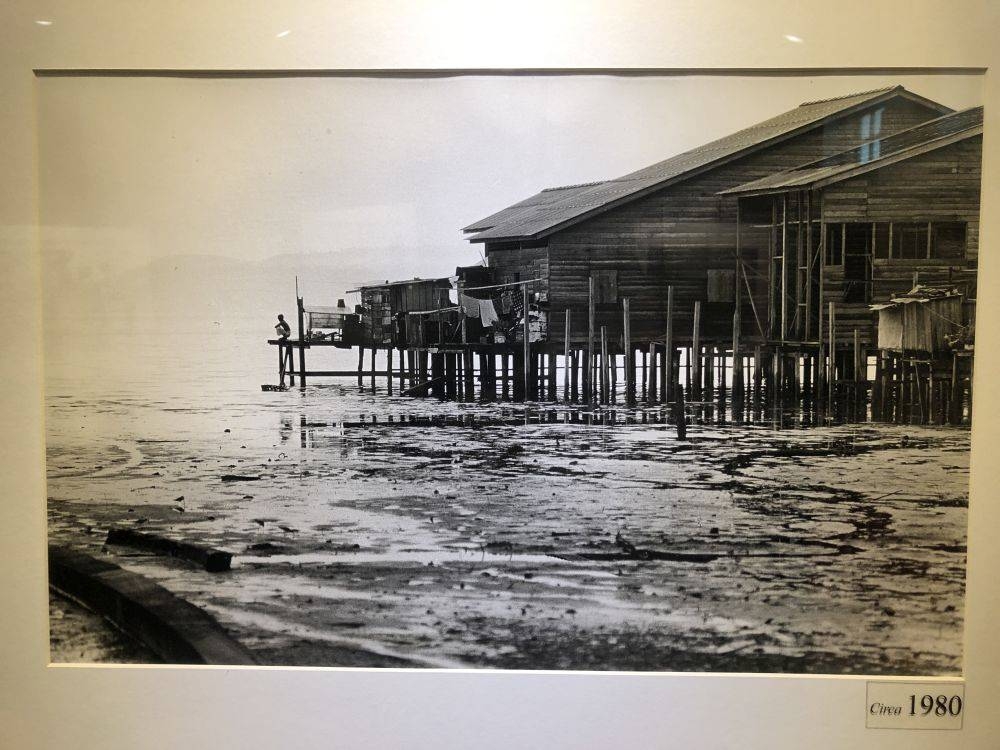GEORGE TOWN, Aug 15 — A house call to Koay Jetty back in the 1970s kickstarted Dr Ooi Cheng Ghee’s interest in capturing the essence of the place through photography.
He had taken up photography as a hobby in 1969 and started photographing the people in Little India before he stumbled upon Koay Jetty after that house call.
Back then, he was probably the only amateur photographer in Penang interested in social documentary photography.
“My first camera was a Nikorrmat and I had converted my mother’s storeroom into a dark room.
“It was during May 13, there was a curfew so with nothing to do at home, I brushed up my skills in the dark room,” he said.
After that visit to Koay Jetty to attend to a patient, Dr Ooi made it a point to visit the clan jetty either before or after documenting Little India.
He believed that there was a story to tell and he wanted to capture the people and their daily lives at the jetty.
Dr Ooi captured images of workers heading off to work in tongkangs from the jetty as well as poignant scenes such as a little girl sleeping outside her home using a metal dish as her pillow or an elderly woman chopping firewood.
His favourite is the picture of the housewife’s lone figure standing on the jetty in contrast to that of workers crammed into tongkangs.
“This scene captured life at the jetty, of a wife who went to see her husband off to work even though it was just another normal day of him going to work, he wasn’t going anywhere far,” he said.
The doctor took a break from photography in the 1980s when it became difficult to get good quality materials to develop his photos.
He then went back to Koay Jetty in 2004 when it was earmarked for demolition to make way for development.
Dr Ooi eventually held a solo exhibition of his photographic documentation of Koay Jetty titled “Koay Jetty - 25 years apart” at Galeri Seni Mutiara in 2006.

Today, he launched his book, Koay Jetty Penang 25 Years Apart, featuring his photographs taken in 1979 and 2004 along with an in-depth history of the jetty written by Chan Lean Heng and Rosalind Chua.
The book is published by Wawasan Open University (WOU), through the George Town Institute of Open and Advanced Studies (GIOAS).
GIOAS chairman Tan Sri Andrew Sheng said the book was four years in the making after a delay due to the Covid-19 pandemic.
A total of 3,000 copies were printed and they will be distributed in bookstores nationally and internationally, he said.
He said GIOAS aims to foster an understanding of Penang and Malaysia among the international community.
“We also want to contribute towards the arts and culture of the city and community,” he said.
Other than the book, Dr Ooi’s Koay Jetty photographs will be on show at the Homestead in WOU.
Sheng said it was the first time GIOAS is organising an exhibition of this nature and they are now planning another art exhibition featuring Penang painters and art collectors.
“We hope to turn the Homestead into an arts and culture centre,” he said.
One of the photos at the exhibition is that of a man sitting in a wheelchair peeking out the front door of his home and 25 years later, Dr Ooi captured a photo of the same man sitting outside his home with a carer.
“I tried to avoid all the politics of the jetty saga to capture what I saw. I just wanted to witness the end of history,” he said in the book.
Born and raised in George Town, the 79-year-old only documented urban scenes of daily life in George Town.
“George Town is the heart of Penang and it is where I was born, raised, educated and maybe, one day, where I will rest,” he said.
Dr Ooi may have retired from medical practice four years ago but photography is still very much in his blood.
“I believe photography is the art of the 21st century and it is much more accessible now to everyone so actually, everyone is creating art but they don’t know it,” he said.
According to the history narrated by Chan in the book, Koay Jetty which was part of the Chinese clan jetties was built in the 19th century and was initially a private jetty to cater to the landing and unloading of the charcoal trade.
It was originally inhabited by Koay labourers with Chinese Muslim roots that can be traced back to 12th century China. However, the Koays living outside of China were no longer practising Muslims but they continued to practise certain customs such as not using lard or pork in their ancestral offerings.
The Koay Jetty was the longest and busiest jetty in the 1950s and 1960s with workers servicing hundreds of tongkangs in the charcoal trade.
The decline of the charcoal trade in the 1970s and the loss of Penang’s free port status in 1969 saw the decline of the jetty.

The jetty was earmarked for demolition even back in the 1960s as it was considered a public eyesore but there was a temporary reprieve.
However, land reclamation near the area cut off the sea-facing side of the jetty and this led to a mangrove swamp spreading over the area.
Finally, in 2006, despite protests and a Save The Koay Jetty campaign, the residents opted for compensation to move out and the jetty was cleared and demolished to make way for low-medium cost apartments.
The demolition of the jetty was also captured in Dr Ooi’s book.
The Koay Jetty book was officially launched by the Yang di-Pertua Negri Tun Ahmad Fuzi Abdul Razak today.
The hardcover book is available for sale at WOU during the month-long photographic exhibition from Aug 15 to Sept 15.
The exhibition is open to the public from 10am to 4pm daily and admission is free.



















